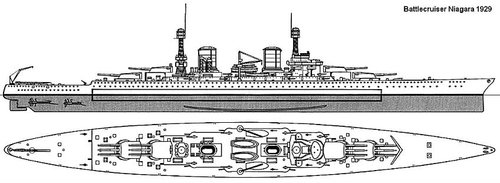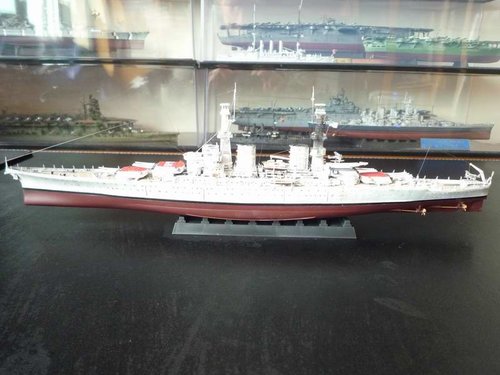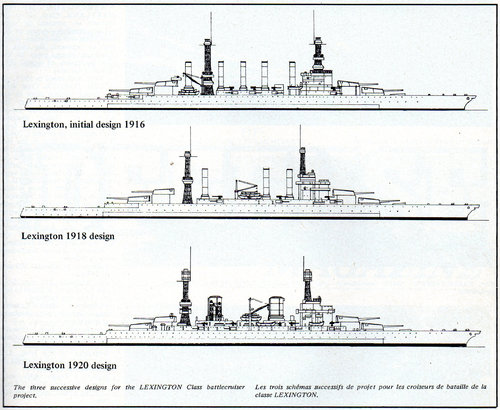The Lexington-class battlecruisers were the only class of battlecruiser to ever be ordered by the United States Navy. Six were planned (CC-1 through CC-6) as part of the massive 1916 building program, but their construction was repeatedly postponed in favor of escort ships and anti-submarine vessels. During these delays, the class was redesigned several times.
Original (1916) Battle Cruiser Numbers 1 - 4 design characteristics:
Definitive (1919) Lexington class (Battle Cruiser Numbers 1 - 6) design characteristics:
The Lexington class consisted of six ships, under construction at four locations:
While four of the ships were eventually cancelled and scrapped on their building ways in 1922 to comply with mandates outlined by the Washington Naval Treaty, two (Lexington and Saratoga) were converted into the United States' first fleet carriers.
http://en.wikipedia.org/wiki/Lexington_class_battlecruiser
http://www.history.navy.mil/photos/usnshtp/bb/cc1.htm
http://www.globalsecurity.org/military/systems/ship/cc-1.htm
Original (1916) Battle Cruiser Numbers 1 - 4 design characteristics:
- Displacement: 34,300 tons
- Dimensions: 874' (length overall); 90'11" (maximum beam)
- Powerplant: 180,000 horsepower steam turbines with electric drive, producing a 35 knot maximum speed
- Armament (Main Battery): Ten 14"/50 guns in two twin (turret #s 1 & 4) and two triple (turret #s 2 & 3) turrets
- Armament (Secondary Battery): Eighteen 5"/51 guns in single mountings (nine guns on each side of the ship)
Definitive (1919) Lexington class (Battle Cruiser Numbers 1 - 6) design characteristics:
- Displacement: 43,500 tons
- Dimensions: 874' (length overall); 105'5" (maximum beam)
- Powerplant: 180,000 horsepower steam turbines with electric drive, producing a 33.25 knot maximum speed
- Armament (Main Battery): Eight 16"/50 guns in four twin turrets
- Armament (Secondary Battery): Sixteen 6"/53 guns in single mountings (eight guns on each side of the ship)
The Lexington class consisted of six ships, under construction at four locations:
- Lexington (CC-1). Keel laid at Quincy, Massachusetts, January 1921. Became the aircraft carrier CV-2.
- Constellation (CC-2). Keel laid at Newport News, Virginia, August 1920. Cancelled and scrapped.
- Saratoga (CC-3). Keel laid at Camden, New Jersey, September 1920. Became the aircraft carrier CV-3.
- Ranger (CC-4). Keel laid at Newport News, Virginia, June 1921. Cancelled and scrapped.
- Constitution (CC-5). Keel laid at Philadelphia, Pennsylvania, September 1920. Cancelled and scrapped.
- United States (CC-6). Keel laid at Philadelphia, Pennsylvania, September 1920. Cancelled and scrapped.
While four of the ships were eventually cancelled and scrapped on their building ways in 1922 to comply with mandates outlined by the Washington Naval Treaty, two (Lexington and Saratoga) were converted into the United States' first fleet carriers.
http://en.wikipedia.org/wiki/Lexington_class_battlecruiser
http://www.history.navy.mil/photos/usnshtp/bb/cc1.htm
http://www.globalsecurity.org/military/systems/ship/cc-1.htm
















